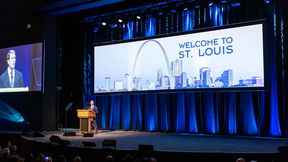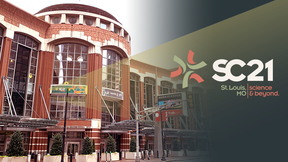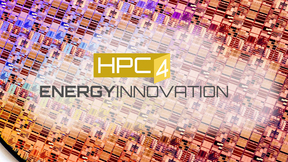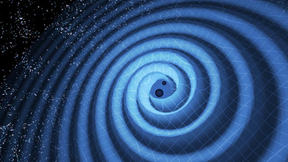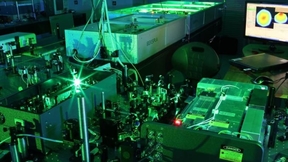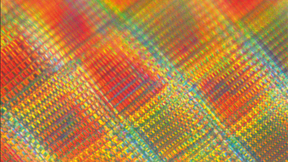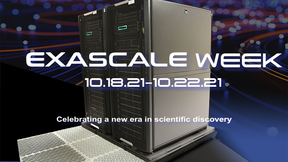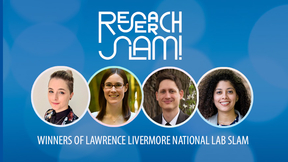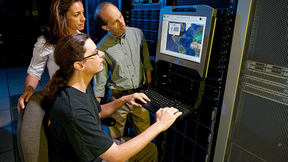Back
Engineering
LLNL team models COVID-19 disease progression and identifies risk factors
A Lawrence Livermore National Laboratory (LLNL) team has developed a comprehensive dynamic model of COVID-19 disease progression in hospitalized patients, finding that risk factors for complications from the disease are dependent on the patient’s disease state. Using a machine learning algorithm on a dataset of electronic health records (EHRs) from more than 1,300…
Journal highlights Lab testing of 3D-printed COVID-19 nasal swabs
Lawrence Livermore National Laboratory’s work on consumables for COVID-19 testing was highlighted in a recent special issue of the Materials Research Society (MRS) Bulletin focusing on materials science innovation in response to the pandemic. Guest-edited with an introduction by Crystal Chu (Lehigh University), Claire Witherel (University of Pennsylvania) and LLNL research…
Newly funded HPC4Mfg project targets more energy-efficient steelmaking
A Lawrence Livermore National Laboratory (LLNL)-led collaboration targeted at using machine learning to reduce defects and carbon emissions in steelmaking is one of eight new projects receiving Department of Energy (DOE) funding through the High Performance Computing for Manufacturing (HPC4Mfg) Program. DOE’s Office of Energy Efficiency and Renewable Energy (EERE)…
Microfabricated thin-film electrodes show therapeutic promise
Earlier this year, thin-film microgrid arrays developed at Lawrence Livermore National Laboratory (LLNL) and used in neurologist Jon Kleen’s patients at the University of California, San Francisco (UCSF) showed that hippocampal brain activity consisted of waves that traveled bi-directionally during behavioral tasks. These thin-film microgrid arrays are designed not just to…
Meet me in St. Louis (virtually or in person): First-ever hybrid Supercomputing conference sports strong Lab flavor
It was a Supercomputing conference like none other before it. For the first time ever, the 2021 International Conference for High Performance Computing, Networking, Storage and Analysis (SC21) went hybrid, with dozens of both in-person and virtual workshops, technical paper presentations, panels, tutorials and “birds of a feather” (BOF) sessions. Under the ongoing specter…
LLNL team wins SC21 Reproducibility Advancement Award
A suite developed by a Lawrence Livermore National Laboratory (LLNL) team to simplify evaluation of approximation techniques for scientific applications has won the first-ever Best Reproducibility Advancement Award at the 2021 International Conference for High Performance Computing, Networking, Storage and Analysis (SC21). Newly instituted by the conference, the award…
HPC for Energy Innovation issues new solicitation for clean energy projects
The U.S. Department of Energy's (DOE) High Performance Computing for Energy Innovation (HPC4EI) initiative, managed by Lawrence Livermore National Laboratory, is seeking proposals for projects that can leverage DOE supercomputing to advance clean energy technologies. The fall 2021 solicitation targets industry partners for collaborations with DOE national laboratories that…
U.S. Department of Energy to showcase national lab expertise at SC21
The scientific computing and networking leadership of the U.S. Department of Energy’s (DOE’s) national laboratories will be on display at SC21, the International Conference for High-Performance Computing, Networking, Storage and Analysis. The conference takes place Nov. 14-19 in St. Louis via a combination of on-site and online resources. The theme of this year’s…
LLNL-led team uses machine learning to derive black hole motion from gravitational waves
The announcement that the Laser Interferometer Gravitational-wave Observatory (LIGO) had detected gravitational waves during the merger of two black holes sent ripples throughout the scientific community in 2016. The earthshaking news not only confirmed one of Albert Einstein’s key predictions in his general theory of relativity, but also opened a door to a better…
LLNL team develops real-time diagnostic for Liquid Metal Jetting 3D printing
As 3D printing continues to grow and evolve, diagnostics capable of monitoring builds in real-time have become essential tools for producing quality parts, particularly in emerging printing technologies such as Liquid Metal Jetting (LMJ). In LMJ, tiny molten metal droplets are ejected from a nozzle at high speeds to 3D print a part in layers, similar to inkjet printers on…
LLNL researchers garner three awards among top 100 industrial inventions
Lawrence Livermore National Laboratory (LLNL) scientists and engineers have collected three awards among the top 100 industrial inventions worldwide. The trade journal R&D World Magazine announced the winners of the awards, often called the “Oscars of invention,” during a three-day virtual ceremony — Oct. 19-21 — and on the magazine’s website. With this year’s results,…
Tube-in-tube structure going strong
Similar to grass stems, Lawrence Livermore National Laboratory (LLNL) scientists have created nanostrut-connected tube-in-tubes that enable stronger low-density structural materials. Porous materials with engineered stretching-dominated lattice designs, which offer attractive mechanical properties with ultra-light weight and large surface area for wide-ranging applications…
Early access systems at LLNL mark progress toward El Capitan
Though the arrival of the exascale supercomputer El Capitan at Lawrence Livermore National Laboratory (LLNL) is still almost two years away, teams of code developers are busy working on predecessor systems to ensure critical applications are ready for Day One. Delivered in February, the “RZNevada” early-access system is providing experts at the National Nuclear Security…
Lawrence Livermore Research Slam! winners advance to Bay Area competition
The top winners of the recent Lawrence Livermore National Laboratory (LLNL) Research Slam!, a speaking competition for postdocs, will advance to the Bay Area Research SLAM set for Thursday, Oct. 28. The Bay Area Research SLAM! is a collaboration between the Bay Area’s national labs (Lawrence Berkeley National Laboratory, LLNL, Sandia National Laboratories and SLAC National…
LLNL engineers deliver final optical components for world’s newest telescope: the Vera C. Rubin Observatory
For much of the past decade, Lawrence Livermore National Laboratory (LLNL) researchers have been designing major optical components for the world’s newest telescope, while their industrial partners have fabricated the components. Now, with the September shipment of the last of six optical filters for the telescope’s camera to the SLAC National Accelerator Laboratory in…
Making it count: Rebuilding infrastructure at the Nuclear Counting Facility
When Daniel Martin put the finishing touches on an autonomous vehicle robot, complete with an ultrasonic sensor to detect and evade obstacles, he knew he wanted to become an engineer. A high school student at the time, he was fascinated by the design and functionality of robots. Fast forward several years, and Martin is now a second-year electrical engineering Ph.D…
Lab garners five technology commercialization grants
Lawrence Livermore National Laboratory (LLNL) scientists and engineers have posted another banner year securing major grants through the Department of Energy’s (DOE) Technology Commercialization Fund (TCF). “I think the Laboratory did very well again, reflecting a variety of types and approaches to our research and development projects,” said Rich Rankin, the director of…
LLNL explores laser beam shaping to improve metal 3D printing
While laser-based 3D printing techniques have revolutionized the production of metal parts by greatly expanding design complexity, the laser beams traditionally used in metal printing have drawbacks that can lead to defects and poor mechanical performance. Researchers at Lawrence Livermore National Laboratory (LLNL) are addressing the issue by exploring alternative shapes…
NNSA taps Dell Technologies to provide expanded computing resources for stockpile stewardship
The Department of Energy’s National Nuclear Security Administration’s (DOE/NNSA’s) Lawrence Livermore National Laboratory (LLNL) announced the awarding of a subcontract to Dell Technologies for additional supercomputing systems to support NNSA’s nuclear deterrent mission. In partnership with Los Alamos National Laboratory (LANL) and Sandia National Laboratories (SNL), the…
Inaugural industry forum inspires ML community
LLNL held its first-ever Machine Learning for Industry Forum (ML4I) on Aug. 10-12. Co-hosted by the Lab’s High Performance Computing Innovation Center (HPCIC) and Data Science Institute (DSI), the virtual event brought together more than 500 participants from the Department of Energy (DOE) complex, commercial companies, professional societies and academia. Industry…






